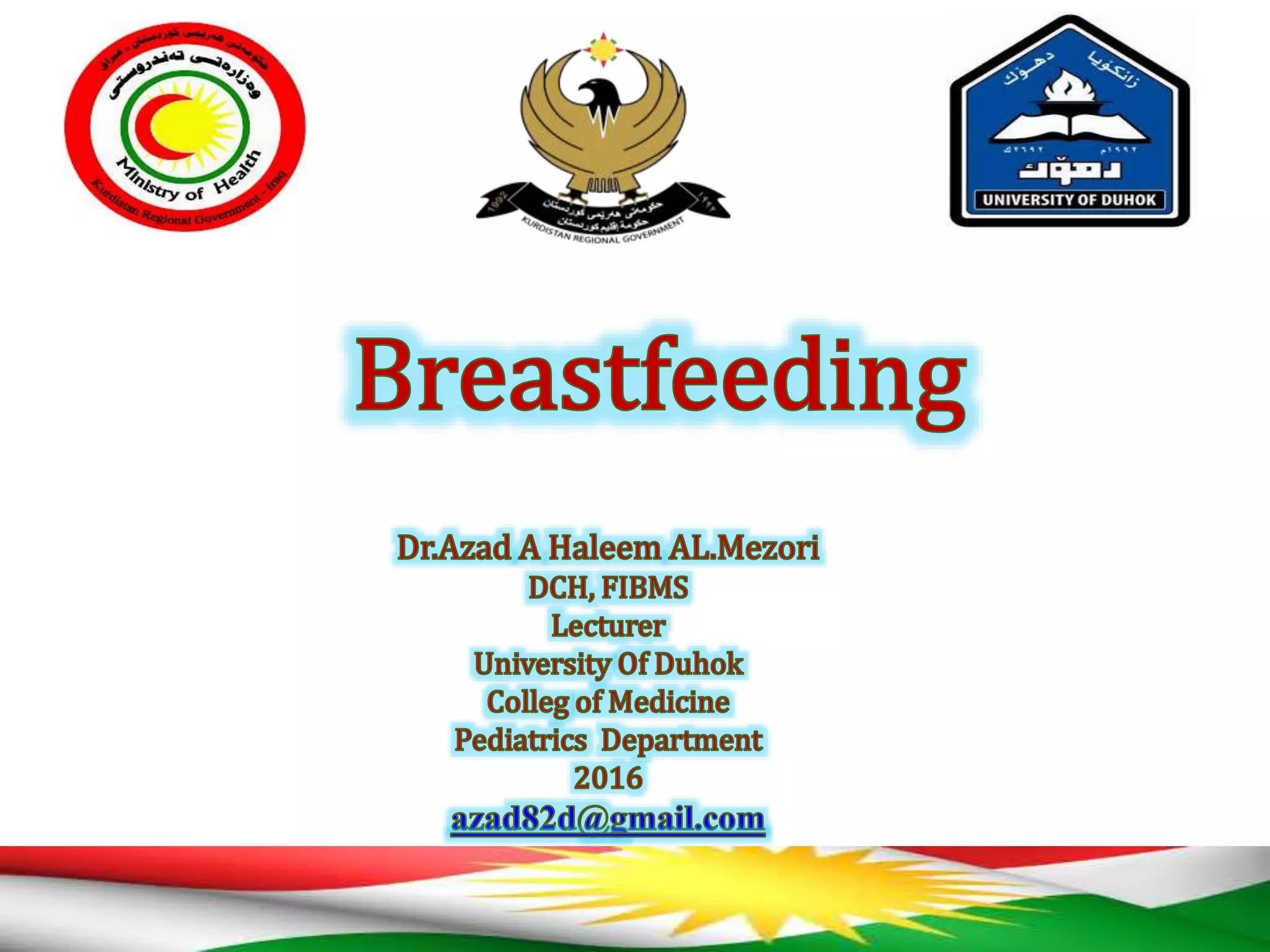This document provides an overview of breastfeeding, including:
- The anatomy and physiology of breastfeeding, how milk is produced in response to hormones.
- The composition and types of human breast milk changes over time.
- The many health benefits of breastfeeding for both infants and mothers, including reduced risk of infection, allergies, and chronic disease.
- Guidelines around proper breastfeeding techniques like positioning, attachment, and ensuring full emptying of breasts at each feeding.
- Storage and handling of expressed breast milk.
- Potential barriers to breastfeeding and rare medical contraindications.
















































